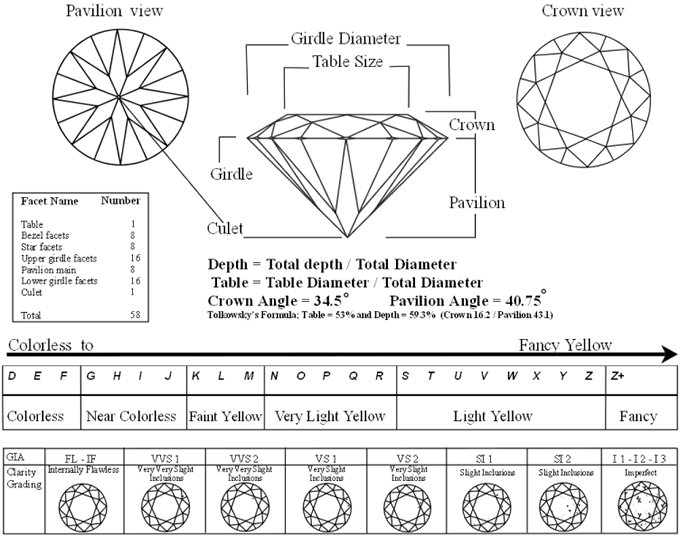So I’ve gone from what diamond certification is to why it’s important to both the industry and the consumer. Then I wrote about how it’s been hijacked and abused. Now I’m going to set forth my personal philosophy on how I’m handling the problem in my store.
In short, having a reputable onsite gemologist and appraiser is my first line of defense. Consumer education is next and is even more critical. Lies get perpetrated two ways: purposefully by the knowledgeable and innocently by the unknowledgeable. Immunization against a disease has proven an effective way of eradicating the disease.
Every diamond that comes into my store, regardless of whether or not it’s certified, or who certified it, goes to Tracy, my gemologist and appraiser. She’s trained by GIA as a gemologist and certified by AGS as an appraiser.
Tracy puts incoming diamonds to the test to see if they stand up to what their diamond grading reports say about them. In the rare instance the diamond is better than what the cert says, someone is going to get a deal. If the diamond doesn’t measure up to the cert, she re-grades it as what it should be, and it’s priced accordingly, with a notation that our suggested grade came in lower than the certifying lab’s suggested grade. If it’s a particularly egregious misrepresentation, she’ll usually send it back to the diamond vendor before customers even have the chance to be appalled. I won’t show that kind of crap in my store unless it’s as an example to prove the point I’m making here.
Which brings me to consumer education. Writing blogs not only lets you learn more about me – what I think is cool and beautiful, and how I design my jewelry – but it also allows me a platform from which to promote consumer education. I’m one voice in Indianapolis, Indiana. Some of you may be reading this in Tuftonboro, New Hampshire, Provo, Utah, or McMinnville, Oregon, and that’s the wonder of the internet. However, firsthand experience in a subject is a world more beneficial than simply reading about it.
There are good and ethical jewelers all over the country; I know. I’ve met them. But there are also just as many snakes out there who give this industry – and those who operate in it with honesty and ethics – a miserable reputation, and I’ve met them, too.
Those of you who have seen my work and been in my store know the standards to which I adhere. I’ve earned your business by those standards, and I’m so grateful for you.
To those of you who have never set foot in the Midwest, let alone Indianapolis: I understand there’s little chance of us meeting. I have no problem working across state lines; I’ve done it many times before (just throwing that out there). But from the neutral vantage point of probably never working with you, and so having no interest outside of supporting the reputation of the fine jewelry industry, I offer you this humble advice…
Be aware of what laboratory has certified your diamond. Diamond certification is designed to protect you as consumers, but it can still be misused. When a diamond is certified, always be sure it is from a reputable lab. In the United States, I trust GIA and AGS.
If you decide to pursue uncertified diamonds, tread carefully. Always be sure you have access to GIA- or AGS-graded diamonds for comparison when shopping for uncertified diamonds. Even if you’re not a trained professional, you can probably differentiate a diamond that looks like lemonade from one that is mostly colorless.
Make jewelry shopping an enjoyable experience for yourself whenever you can.

Diamond Grading Reference Chart
Tags: AGS, diamonds, fine jewelry, GIA, New Hampshire, reputation, United States